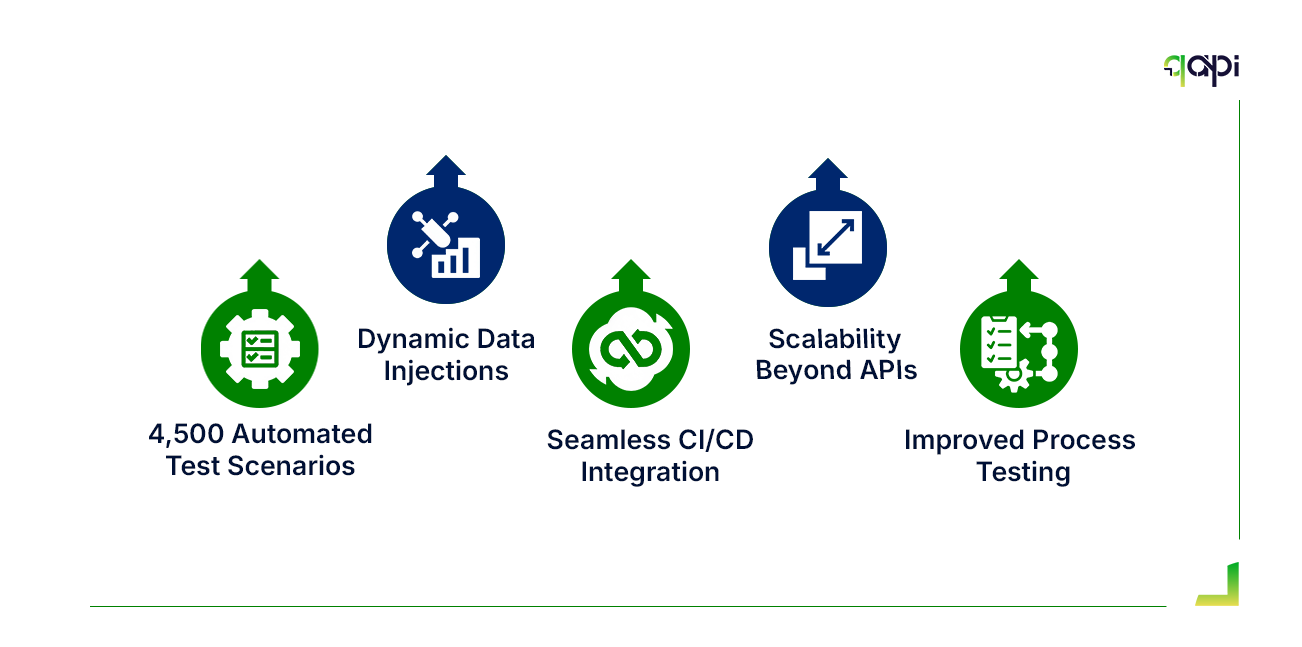Overview
The industry’s first neo-bank was launched in the UK to specifically cater to the demands of affluent clients—approximately 7 million professionals, entrepreneurs, property investors, and others. With a mission to deliver hyper-personalized financial products (e.g., savings, fixed deposits, lending), their growth was always dependent on rapid software releases.
The Challenge
A Need for Change
For any financial institution, trust is built on reliability. Our client, a leader in digital banking and financial services, prided itself on delivering seamless customer experiences. However, as their digital offerings expanded, so did the challenges of maintaining software quality.
The institution found itself at a crossroads—struggling with lengthy testing cycles, defect leakage, and the increasing pressure to release updates faster while maintaining impeccable reliability.
Despite the best efforts of their development and quality assurance teams, traditional manual testing methods were falling short. Bugs that escaped detection in QA often came back in User Acceptance Testing (UAT), leading to costly fixes and delays.
With customer expectations at an all-time high, the institution took a strategic approach to rethink its API testing metrics.
The Roadblocks to Innovation
The bank’s testing inefficiencies stemmed from several key pain points:- Heavy Reliance on Manual Testing: The majority of test scenarios required manual execution, making regression testing time-consuming and resource-intensive.
- Defect Leakage: Up to 65% of defects made it past QA undetected, only surfacing in UAT, increasing remediation costs and time.
- Extended Testing Timelines: Some releases required up to 17 weeks of testing, delaying critical updates.
- Scalability Challenges: As digital services expanded, the existing test framework struggled to keep up.
Recognizing that speed and accuracy were important for them, our client the bank planned for a solution that could streamline its testing efforts without sacrificing quality.
A Shift to AI-Powered Test Automation
The bank got a complete walkthrough of qAPI—a next-generation, AI-driven test automation platform. Designed to seamlessly integrate with existing workflows, qAPI offered a scalable, codeless solution that would transform the institution’s testing strategy. With qAPI, the bank was able to:- Automate Complex Test Scenarios: The team developed over 110 automated test scripts tailored to complex loan processing workflows, ensuring comprehensive validation.
- Reduce Defect Leakage: The defect leakage rate from QA to UAT dropped from 65% to just 10%.
- Accelerate Test Cycles: Testing timelines were reduced from 17 weeks in Release 4 (R4) to just 5 weeks in Release 9 (R9), a 70% reduction in test cycle times.
- Optimize Testing Efforts: Manual testing efforts in UAT were cut by 80%, allowing testers to focus on more strategic tasks.
- Enhance Test Execution with AI: qAPI’ AI-powered platform enabled early bug detection, reducing last-minute defects and rework.
The Solution
A Shift to AI-Powered Test Automation
The bank got a complete walkthrough of qAPI—a next-generation, AI-driven test automation platform. Designed to seamlessly integrate with existing workflows, qAPI offered a scalable, codeless solution that would transform the institution’s testing strategy. With qAPI, the bank was able to:
- Automate Complex Test Scenarios: The team developed over 110 automated test scripts tailored to complex loan processing workflows, ensuring comprehensive validation.
- Reduce Defect Leakage: The defect leakage rate from QA to UAT dropped from 65% to just 10%.
- Accelerate Test Cycles: Testing timelines were reduced from 17 weeks in Release 4 (R4) to just 5 weeks in Release 9 (R9), a 70% reduction in test cycle times.
- Optimize Testing Efforts: Manual testing efforts in UAT were cut by 80%, allowing testers to focus on more strategic tasks.
- Enhance Test Execution with AI: qAPI’ AI-powered platform enabled early bug detection, reducing last-minute defects and rework.

Delivering Measurable Impact
The implementation of qAPI transformed the financial institution’s approach to testing, yielding substantial benefits:- Enhanced Efficiency: The institution automated over 550 test cases, achieving 90% test script execution on qAPI.
- Higher Software Quality: Early-stage bug detection led to fewer production defects and improved software stability.
- Reduced Operational Costs: The shift from manual to automated testing significantly lowered costs.
- Scalability & Security Compliance: qAPI’ cloud-based, ISO 27001 & SOC2-compliant infrastructure ensured a secure and scalable testing environment.
- Seamless Integration: With its intuitive, codeless interface, qAPI eliminated the need for costly custom frameworks, making adoption seamless.
Qyrus’s all-in-one platform combines AI intelligence, codeless automation, and enterprise-grade security to empower teams across the testing lifecycle:
- Unified Testing: Complete end-to-end API testing on a single cloud platform.
- Zero Maintenance: Pre-configured infrastructure with no setup time.
- Cost Efficiency: Reduced operating costs and human errors by up to 40%.
About qAPI :
qAPI is the industry’s first End-to-End API Testing company that helps organizations achieve API protection in a cloud-first, API-driven world. We help businesses with innovative tools and services designed to streamline API testing, ensure reliability, and enhance application performance. Trusted by financial institutions, logistics companies, and many more worldwide, we help organizations create products and APIs they can depend on for seamless performance and integration.
To learn more about our products and services, visit us at www.qyrus.com/qapi/
